Class Anthozoa Rank Species | Order Actiniaria | |
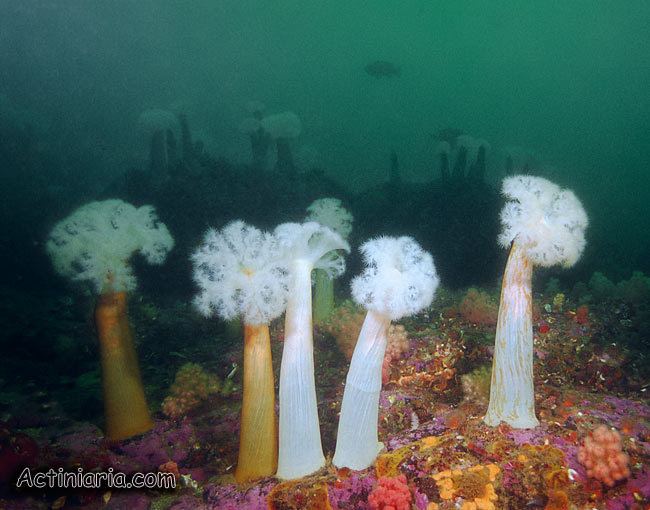 | ||
Similar Metridium, Metridiidae, Metridium senile, Fish‑eating Anemone, Corynactis californica | ||
Metridium farcimen scooter dive metridium fields monterey ca
Metridium farcimen is a species of sea anemone in the family Metridiidae. It is commonly known as the giant plumose anemone or white-plumed anemone. It is found on the western seaboard of the United States and Canada and in deep water sites especially where the water is slow moving.
Contents
- Metridium farcimen scooter dive metridium fields monterey ca
- Metridium farcimen at rocky point park
- Taxonomy
- Description
- Distribution
- Biology
- References
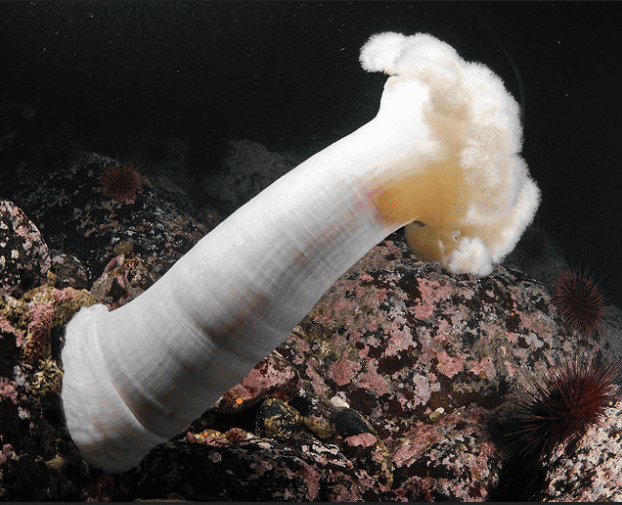
Metridium farcimen at rocky point park
Taxonomy
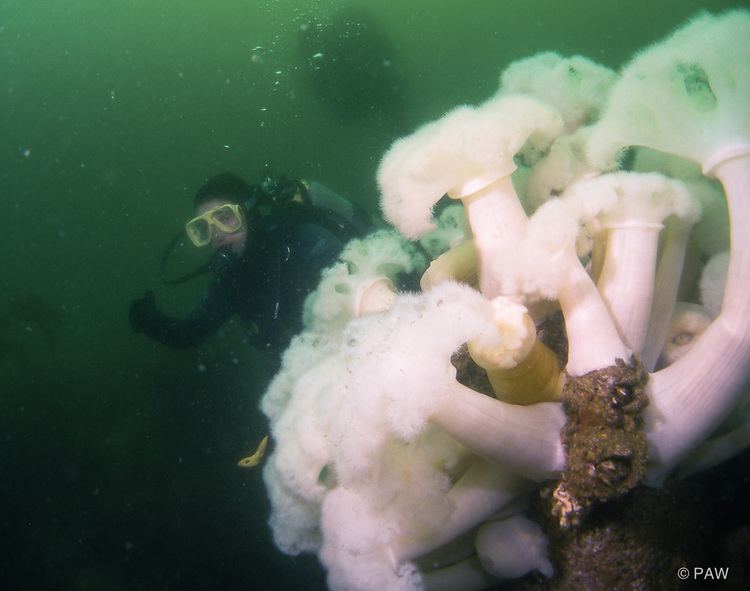
In 1990, Fautin et al. examined the validity of the name Metridium giganteum. A further study in 2000 concluded that Actinia priapus; Tilesius, 1809, Actinia farcimen; Brandt, 1835, and Isometridium rickettsi; Carlgren, 1949 were all synonyms of Metridium giganteum. Of these, Actinia farcimen was the name first published. It is, however, a junior homonym so the valid name for the species is Metridium farcimen; (Brandt, 1835). The World Register of Marine Species attributes the name Metridium farcimen to (Tilesius, 1809) and gives Isometridium rickettsi; Carlgren, 1949, as the only synonym.
Description
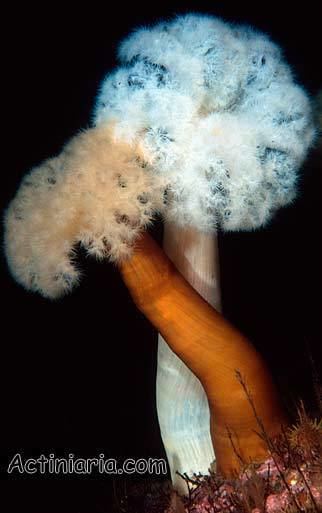
Metridium farcimen is a large sea anemone, occasionally reaching a height of one metre (39 in) when fully extended. More usually it is 50 cm (20 in) or less in height but is very variable in shape. It can retract its tentacles and form a ball up to 25 cm (10 in) in diameter. The column is slender, smooth and studded with acontia. These are openings through which thread-like nematocysts from inside the body wall can protrude. There are no tubercles and the column is topped by a parapet. The oral disc is lobed and deeply convoluted at the edge and bears well over 100 fine, short, tapering tentacles. The colour is generally opaque white, but orange, salmon and brown specimens sometimes occur. Large specimens have been seen to have long, thick, fighting tentacles, used to drive away other anemones trying to settle too close. In large colonies that all emanate from one individual by cloning, individuals on the edge of the colony may have several of these fighting tentacles on their lips which they use to repel other, non-clonal anemones. Metridium farcimen might be confused with Metridium senile which occupies the same habitat and has a similar colour and form, but that species seldom exceeds 10 cm (4 in) in height, has fewer than 100 tentacles and has an unlobed oral disc.
Distribution

Metridium farcimen is found on the western seaboard of the United States and Canada. Its range extends from Alaska southwards to California. It is at its most common in Puget Sound and around Vancouver Island. It is found in the sublittoral zone on rocks, mollusc shells, pilings, docks and other man-made structures and even in polluted waters. It is also found at great depths, near hydrothermal vents, cold water seeps and decomposing whale carcases on the seabed.
Biology
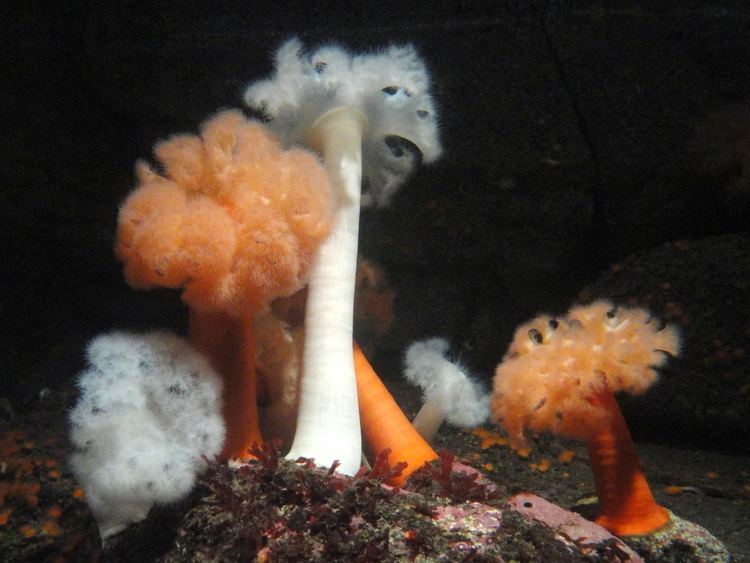
Metridium farcimen is a carnivore. It captures small invertebrates, zooplankton and other food particles with the nematocysts on its tentacles and thrusts them into the mouth in the centre of its oral disc. Large anemones have few predators but smaller specimens are eaten by the starfish, Pisaster spp., and by various nudibranchs. The starfish, Dermasterias imbricata, has been observed feeding on larger anemones in Puget Sound.
Reproduction takes place with the liberation of eggs and sperm from the gonads embedded in the body wall which are then ejected through the mouth. Fertilised eggs develop into planula larvae. After several moults, these settle and metamorphose into polyps. Does not replicate asexually, occurring as solitary individuals or as congregations of genetically distinct individuals (Bucklin, 1987a).
Metridium farcimen is a long lived species. A plumose anemone in this genus is reported to have lived for nearly 100 years in an aquarium, and even after that time, the cause of death was equipment failure rather than old age.
